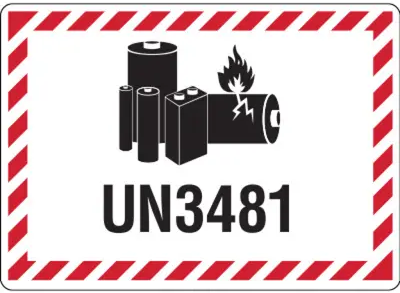James Miller, a veteran HGV driver with 15 years of experience, faced a complex challenge when tasked with transporting a mixed load containing Class 3 flammable liquids, Class 8 corrosive substances, and Class 9 miscellaneous dangerous goods from Manchester to Southampton. The journey would require careful planning, precise documentation, and strict adherence to ADR regulations.
Load Assessment and Planning
The consignment included industrial solvents (UN1993, PG II), battery acid (UN2794), and lithium-ion batteries (UN3480). James’s first step was to verify that these substances could be legally transported together. Using the ADR mixing rules, he confirmed that these particular goods were compatible for mixed loading, provided proper segregation was maintained.
Vehicle Preparation and Documentation
The transport unit required specific equipment as per ADR regulations. James ensured his vehicle carried two 6 kg dry powder fire extinguishers, wheel chocks, warning signs, proper PPE, including chemical-resistant gloves, and eye protection. The vehicle displayed orange-coloured plates at the front and rear, along with appropriate hazard placarding reflecting all dangerous goods classes being carried.
Practical Implementation

The loading sequence proved critical. James worked with the warehouse team to ensure the Class 8 corrosives were segregated from other materials using spill pallets. The lithium batteries were secured in UN-approved packaging with appropriate cushioning, while the flammable liquids were positioned to prevent movement during transport.
Route Planning Considerations
The journey required careful route planning. As the load exceeded the small load threshold specified in ADR 1.1.3.6, James needed to follow ADR-designated routes and observe tunnel restrictions. He planned stops at approved parking locations, maintaining the required supervision of the vehicle as per ADR requirements.
Challenges Encountered
During the journey, James encountered a minor mechanical issue requiring a stop. Following ADR protocols, he parked in a safe location away from populated areas, displayed warning triangles, and contacted his transport manager. The situation highlighted the importance of having clear procedures for unexpected events.
Key Learning Points
This case study demonstrates several critical aspects of ADR compliance:
- The importance of thorough pre-journey planning and documentation verification
- The need for precise load segregation and security
- The value of having clear procedures for unexpected situations
- The essential nature of proper vehicle equipment and marking
For operators and drivers handling mixed dangerous goods loads, this case emphasises that compliance isn’t just about following rules—it’s about understanding why these regulations exist and how they contribute to safe transport operations.
Regulatory Context
Under UK regulations, implementing the European Agreement concerning the International Carriage of Dangerous Goods by Road (ADR), drivers must hold valid ADR certificates covering all classes of dangerous goods they transport. The case study illustrates how these requirements translate into practical, day-to-day operations.
The successful completion of this transport operation showcases how proper training, careful planning, and attention to detail enable the safe movement of mixed dangerous goods. It serves as a practical example of ADR compliance in action, demonstrating that while regulations may seem complex, they provide a clear framework for safe transport operations.
